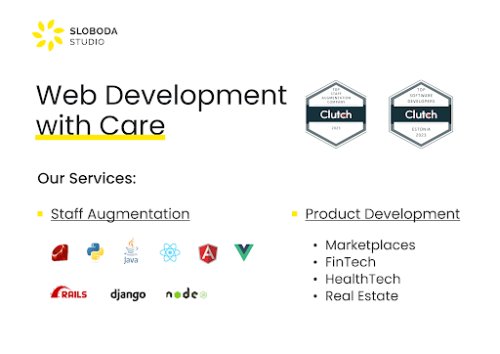In the ever-evolving world of product development, achieving product-market fit is the holy grail. It’s that sweet spot, product-market fit, where your product perfectly resonates with your target market, leading to sustained growth and success. But what exactly is product-market fit, and how do you navigate the journey towards it? This article explores the key elements and strategies to achieve this harmonious state for your product, ensuring it not only exists but thrives in a competitive marketplace.
Why Product-Market Fit is Crucial for Success
Imagine pouring your heart and soul into developing a product, only to find it gathering dust in the digital marketplace. This is the harsh reality for products that lack market fit. Without it, acquiring customers, generating revenue, and achieving long-term success becomes an uphill battle. Product-market fit, on the other hand, validates your product’s existence. It ensures you’re solving a genuine problem for your target audience, leading to satisfied customers, brand loyalty, and a thriving business.
Think of it like this: you’ve built a beautiful bridge, but it leads to nowhere. Product-market fit ensures your bridge connects a bustling city with a fertile island, creating a vital passage for commerce and growth.
Sloboda Studio has extensive experience working with startups and companies that need MVPs. Having released over 200 projects, they are ready to share their knowledge with you today.

The Fundamentals of Product-Market Fit
Let’s delve into the core concepts of product-market fit.
Defining Product-Market Fit
Product-market fit is the ideal state where your product’s value proposition perfectly aligns with the needs and desires of your target market. It signifies that you’ve successfully identified a problem worth solving and created a solution that resonates with your customers.
Imagine you’re developing a new fitness app. A product with market fit wouldn’t just offer workout routines; it would address a specific need within the fitness market, like gamified training for busy professionals or personalized coaching for weight loss.
The Indicators of Product-Market Fit
While there’s no single “magic formula” for product-market fit, certain indicators point towards its presence. These include:
- High customer acquisition rates: People are actively seeking out and adopting your product.
- Low churn (customer cancellation rates): Customers are finding value in your product and sticking around.
- Positive customer reviews: Your users are enthusiastic about your product and recommending it to others.
- Strong brand loyalty: Customers not only use your product but become advocates for your brand.
- Increasing sales figures: Your product is generating consistent and sustainable revenue.
These metrics paint a picture of a product that resonates with its target audience and is driving business growth.
Market Research: Building the Foundation
The journey to product-market fit begins with a deep understanding of your target market.
Think of it like building a house. You wouldn’t start construction without a blueprint and a thorough understanding of the terrain. Similarly, market research provides the blueprint for your product, ensuring it’s built on solid ground and caters to the needs of your target audience.
Identifying Your Target Market
Who are you building this product for? Conduct thorough market research to define your ideal customer profile. Consider demographics like age, location, and income level, alongside psychographics like interests, values, and online habits.
For example, if you’re developing a language learning app, your target market might be young professionals seeking to travel abroad or individuals looking to connect with family members who speak another language.
Understanding Customer Needs and Pain Points
What problems do your target customers face? What are their frustrations and unmet needs? Utilize a variety of market research techniques to gain insights into their pain points. Here are some effective methods:
- Surveys: Create online surveys to gather quantitative data on demographics, preferences, and buying behaviors.
- Focus groups: Facilitate group discussions to gain qualitative insights into customer needs, frustrations, and desired product features.
- Competitor analysis: Analyze existing products in your market space to understand their strengths, weaknesses, and potential gaps you can address with your offering.
By understanding your target market’s needs and pain points, you can develop a product that solves a real problem and offers a clear value proposition.
Product Development: Crafting the Solution
With a clear understanding of your market, you can start crafting a product that solves their problems.
Designing Products That Meet Market Needs
Leverage the insights from your market research to design a product that directly addresses the needs of your target audience. Focus on functionality, user experience, and features that offer real value to your customers.
For example, if your market research reveals that busy professionals struggle to find time for lengthy workouts, your fitness app might offer short, high-intensity interval training routines that can be completed in under 30 minutes.
Iterative Development and MVPs (Minimum Viable Products)
Embrace an iterative development approach. Don’t wait to launch a perfect product; instead, prioritize getting a minimum viable product (MVP) into the hands of your target audience as soon as possible.
An MVP is a basic version of your product with core functionalities that allows you to validate core assumptions and gather user feedback early on. This feedback is crucial for refining your product and ensuring it achieves product-market fit.
Imagine you’re developing a social media platform for dog lovers. Your MVP might focus on a core feature like pet profile creation and photo sharing, allowing you to test user engagement and identify desired functionalities before investing resources in additional features like dog park locators or pet sitter services.
Testing and Feedback: Refining the Product
Customer feedback is the fuel that propels your journey towards product-market fit. Building mechanisms to gather and analyze user feedback is essential for refining your product and ensuring it resonates with your target market.
Implementing Customer Feedback Loops
Establish robust customer feedback loops. Utilize a variety of channels to gather user input, including:
- In-app feedback mechanisms: Integrate surveys or feedback forms within your product to capture user experiences directly.
- Customer support channels: Use email support tickets, live chat features, or phone support to address user concerns and gather feedback.
- Social media engagement: Monitor brand mentions and participate in social media conversations to understand user sentiment.
- Beta testing programs: Invite a select group of users to test new features or functionalities and provide feedback before wider release.
By actively listening to your customers, you can identify areas for improvement and prioritize features that will enhance the user experience and drive product adoption.
Refining Your Product Based on User Input
Analyze the feedback you receive and use it to iterate on your product. Address user pain points, enhance features, and continually improve the overall user experience. Here are some examples of how user feedback can be used to refine your product:
- Feature prioritization: Feedback can highlight which features are most valuable to users, allowing you to prioritize development efforts.
- Bug fixes and usability improvements: User reports of bugs or confusing functionalities can be addressed to streamline user experience.
- New feature development: Feedback may reveal unmet needs or desired functionalities that can be incorporated into future product iterations.
Remember, product development is not a linear process. It’s an ongoing cycle of building, testing, learning, and refining based on user feedback.
Measurement and Adjustment: Keeping Your Finger on the Pulse
Data-driven decision-making is crucial for achieving product-market fit. Don’t rely solely on intuition or anecdotal feedback; leverage data analytics to measure product performance and identify areas for improvement.

Key Metrics for Assessing Product-Market Fit
Track key performance indicators (KPIs) to gauge market response to your product. Here are some essential metrics to monitor:
- Customer Acquisition Cost (CAC): The cost of acquiring a new customer. This metric helps assess the efficiency of your marketing and sales efforts.
- Customer Lifetime Value (CLTV): The total revenue a customer generates over their relationship with your product. A high CLTV indicates a loyal customer base.
- Conversion Rates: The percentage of visitors who take a desired action on your product, such as making a purchase or signing up for a free trial.
- Net Promoter Score (NPS): Measures customer loyalty and satisfaction. A high NPS score indicates a customer base that is likely to recommend your product to others.
By analyzing these metrics, you can gain valuable insights into user behavior, identify potential roadblocks to product adoption, and make informed decisions about product development and marketing strategies.
Pivoting Strategy Based on Performance Data
Don’t be afraid to pivot based on your data. If your metrics indicate a lack of market fit, it’s time to re-evaluate your target market, refine your product offering, or even consider a strategic pivot to a new market segment.
Imagine you develop a productivity app targeted towards young professionals but discover through user data that busy parents are the ones finding the most value in your time management features. This might indicate a need to adjust your marketing strategy and target messaging to resonate with this new audience segment.
Sustaining Product-Market Fit: A Continuous Journey
Achieving product-market fit is not a destination, but rather a continuous journey. The market is dynamic, customer needs evolve, and competitors are constantly innovating. To maintain this harmonious state, you need a commitment to ongoing improvement and adaptation.
Adapting to Market Changes
Markets are fluid, and customer needs can shift over time. Stay ahead of the curve by continuously monitoring market trends through various methods:
- Industry publications and reports: Stay informed about industry trends, competitor activity, and technological advancements relevant to your product space.
- Social media listening: Monitor conversations on social media platforms to identify emerging customer needs and pain points.
- Customer feedback analysis: Regularly analyze user feedback to identify changes in user behavior, preferences, and desired functionalities.
By staying attuned to market changes, you can anticipate future needs and proactively adapt your product to maintain relevance and address evolving customer demands.
Continuous Improvement and Innovation
Never become complacent. Continuously strive to improve your product by:
- Adding new features: Based on user feedback and market trends, incorporate new features that enhance the user experience and address evolving customer needs.
- Exploring innovative technologies: Integrate emerging technologies like artificial intelligence, machine learning, or augmented reality to stay ahead of the curve and deliver a cutting-edge user experience.
- A/B testing and optimization: Utilize A/B testing to compare different versions of your product features and user interface elements to identify the most effective design choices for user engagement and conversions.
Remember, innovation is key to maintaining a competitive edge and ensuring your product continues to resonate with your target audience.
Building a Culture of Product-Market Fit
Achieving and sustaining product-market fit is not a solo endeavor. It requires a company culture that prioritizes understanding customer needs, embraces data-driven decision-making, and fosters a spirit of continuous improvement.
By cultivating a culture of product-market fit, you empower your team to develop products that not only function well but truly resonate with your target audience, driving long-term success and customer satisfaction.
Final Thoughts
The journey to product-market fit is a dynamic and iterative process. By prioritizing market research, embracing user feedback, and leveraging data analytics, you can develop and refine a product that solves real problems and offers significant value to your target customers. Remember, achieving product-market fit is not a one-time accomplishment; it’s an ongoing commitment to understanding your customers, adapting to market changes, and continuously innovating to deliver a product that remains relevant and valuable in a competitive landscape.

